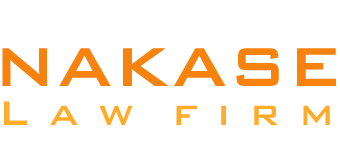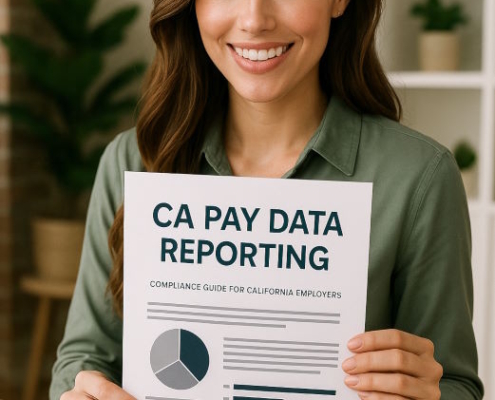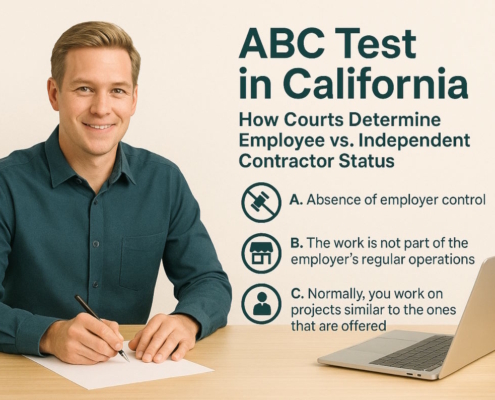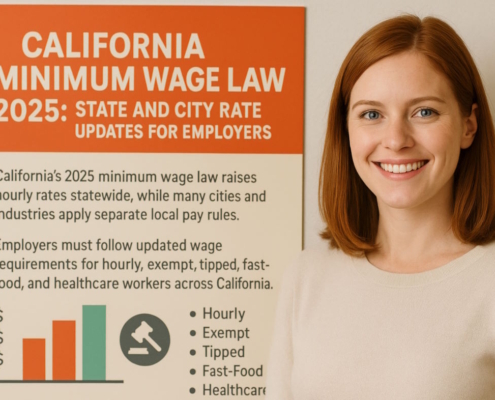Introduction
The Employee Retention Credit was an assistance scheme from the Covid-19 pandemic. The goal was to incentivize businesses to keep their employees on throughout the pandemic, and businesses could claim significant portions of their payroll expenses back in the form of a tax refund. Even though the Covid-19 pandemic is well and truly over, businesses can still retroactively receive tax refunds for eligible wages from the Employee Retention Credit. Here is everything you need to know about the Employee Retention Credit, including how to retroactively apply for the tax refund.
What Is the Employee Retention Credit?
During the Covid-19 pandemic, the US government introduced a number of assistance schemes to protect both individuals and businesses from the impact of the recession. Among these were schemes for businesses designed to incentivize companies to keep their employees on (rather than laying them off) and to reduce the cost of doing that.
The employee retention credit was one such assistance scheme. It took the form of a refundable tax credit to businesses that both met the eligibility requirements and kept their staff on throughout the program duration.
Businesses could apply for employee retention credit for payroll expenses, including qualified wages (both part-time and full-time wages) and heath insurance costs. The incentive was structured to give a small tax credit in 2020 and a large credit in 2021 for the employees that were retained.
Employee Retention Credit Laws
The Covid-19 pandemic was an unprecedented world event, so the laws surrounding employer retention credits were revised a number of times between March 2020 and November 2021. These new employee retention credit laws revised the eligibility requirements and the employer responsibilities.
1. Employee Retention Credit Law: CARES ACT (2020)
The Employee Retention Credit was introduced under the CARES Act of 2020 alongside other forms of economic aid for both businesses and families.
Under the CARES Act, The Employee Retention Credit was available to businesses, trades, and tax-exempt organizations that were employers. The credit was as follows:
- It can be claimed against up to 50% of qualified wages paid during the period of March 13th – December 31st
- Capped at $10,000 per employee each year.
- Is taken against the employer’s SS tax portion.
2. Employee Retention Credit Law: Consolidated Appropriations Act (2021)
As the Covid-19 pandemic continued to force businesses to remain closed, the government passed the Consolidated Appropriations Act to allow more businesses to participate in the Employee Retention Credit scheme and to increase the credit amount.
The following employers were added to the eligibility for the Employee Retention Credit:
- Colleges and universities who provide medical care as their main purpose
- PPP recipients
- 501(c)(1) organizations
The credit was now capped at $10,000 per employee per quarter (instead of per year as per the CARES Act). And eligible employers could claim credit against 70% of paid qualified wages.
3. Employee Retention Credit Law: American Rescue Plan (2021)
As the United States was starting to come out the other side of the Covid-19 pandemic, the government revised its assistance programs, including the Employee Retention Credit, to ensure that there was still enough support to allow businesses to recover. However, businesses didn’t need the level of support they had been receiving up to this point.
Employers can still claim a tax credit against 70% of qualified wages. However, the cap has decreased to $7,000 per employee per quarter. Also, the end date of the Employee Retention Credit changed depending on what made the business eligible. Businesses that were eligible under the Recovery Startup could claim employer retention credits until the end of 2021. Most other businesses had the program end date brought forward.
Eligibility for the Employee Retention Credit
The eligibility criteria changed throughout the Employee Retention Credit program. In this section we will discuss the general eligibility criteria first and then dive into how the eligibility requirements changed with each law.
1. General Eligibility Requirements
Even through all the changes in laws, there were some things that stayed consistent during the Employee Retention Credit program.
Employer Eligibility Requirements
By the end of the Employee Retention Credit program, most types of employers were eligible. This is important because, until recently, eligible employers were able to apply for tax credits retroactively.
In order to be eligible for the employee retention credit, employers had to meet 1 of the following two requirements during the period they were applying for:
- The employer had to reduce business hours or was fully or partially shuttered due to government order during the period – Many non-essential businesses were forced to close their doors during the Covid-19 pandemic, so the employee retention credit eased the burden for those businesses.
- The employer’s gross receipts experienced significant decline during the period- This had to be amended during the Employee Retention Credit program because the assistance the employer received (including PPP loans) could disqualify otherwise eligible and needy employers.
These two eligibility requirements meant that businesses that were affected were covered, even if they stayed open because they provided essential products or services.
Wage Eligibility Requirements
Employers were only able to claim the tax credit on eligible wages. Wages that have been forgiven under PPP or are expected to be forgiven are not eligible for Employee Retention Credit.
An employer’s qualified wages are based on the number of full-time employees (an employee who works an average of 30 hours per week or who works 130 hours per month.) Full-time equivalent hours don’t count towards the Employee Retention Credit, unlike with PPP loans.
Some health insurance or health plans will be eligible for the tax credit too. In most cases, the pre-tax amount of both employer and employee portions will be eligible for a tax credit. However, the calculation of health insurance will vary a lot depending on the circumstances.
Now let’s look at how the eligibility requirements changed for each of the Employee Retention Credit laws.
2. CARES Act (2020)
The CARES Act introduced the Employee Retention Credit program so it set the eligibility requirements. Here are the initial eligibility criteria:
Employer Eligibility Requirements
In order to be eligible for the Employee Retention Credit, the employer must experience a quarter where their gross receipts are lower than 50% than the same quarter in 2019. However, if the quarter that immediately follows is 80% or higher compared to the same quarter in 2019, then the employer is no longer eligible.
Wage Eligibility Requirements
When the Employee Retention Credit programme was introduced, there were different eligibility requirements depending on the size of the business.
Businesses that have over 100 full-time employees, can only use the tax credit towards the wages of employees who are not working due to the business’s temporary closure or a reduction in operations. The tax credit was also not applicable to days off (like sick days, vacation days, or other personal leave.)
All wages for businesses of 100 employees or fewer are eligible for the tax credit, meaning that the Employee Retention Credit program can help businesses with the wages of their employees that are still working throughout the pandemic.
3. Consolidated Appropriations Act (2021)
The eligibility requirements for the Employee Retention Credit changed at the start of 2021 in the Consolidated Appropriations Act.
Employer Eligibility Requirements
This is where the 2 possible eligibility criteria was introduced. In order to receive the Employer Retention Credit, a business either had to be impacted by quarantines or government mandated closures OR their gross receipts had to drop by 20% or more compared to the same quarter in 2019.
The IRS gave new businesses an exception. If the business was not open in 2019, then the business could use their gross receipts from the quarter when they first started the business.
Wage Eligibility Requirements
This new Employer Retention Credit law allowed businesses with 500 employees or fewer to apply the tax credit to wages of their full-time employees, not just the ones who are not working due to forced closures or reduced operations.
4. American Rescue Plan Act (2021)
As recovery was on the horizon, the US government was closely monitoring the economy and making amendments to its assistance programs. The American Rescue Plan Act sought to provide American businesses and the American public with some much-needed support to get out of the hole.
Employer Eligibility Requirements
The American Rescue Plan Act improved the employer eligibility requirements in 2 main ways.
- Businesses would be able to choose whether they were calculating their eligibility (still a 20% reduction or more) compared to the same quarter in 2019 or the quarter immediately preceding the current quarter.
- Startup businesses have an additional eligibility criteria which if met would entitle the business to a quarterly tax credit of up to $50,000 if they met the following eligibility criteria:
- The business first opened for trading after February the 15th
- Its gross receipts are at or lower than $1 million.
- The business is not otherwise eligible for the Employee Retention Credit.
If the business qualifies under the additional startup eligibility criteria, then it will be able to use all qualifying wages (not just full-time wages) for the tax credit.
Wage Eligibility Requirements
The US government re-evaluated and made more wages eligible for the Employee Retention Credit in order to provide more support for the businesses that were hardest hit by the Covid-19 pandemic. So, in addition the businesses with 500 employees or fewer being able to apply the Employee Retention Credit to eligible full-time wages (including for employees that have been working), now businesses whose gross receipts were less than 10% of their gross receipts in the same quarter in 2019. This was not able to be applied retroactively.
The IRS announced that they would crack down on employers who tried to game the system by increasing the wages of their employees in order to gain a bigger tax credit.
5. Infrastructure Investment and Jobs Act (2021)
This law wasn’t technically for the Employee Retention Credit, but it did reduce the eligibility slightly as the government started adjusting their assistance programs.
Employer Eligibility Requirements
The new eligibility requirements added for startups in the American Rescue Plan were now removed.
How Does the Employee Retention Credit Work?
While the Employee Retention Credit is discussed in terms of a tax credit, it is actually processed by the IRS as a refund after you have paid your business payroll taxes. In some cases, there may be non-refundable portions of the Employee Retention Credit. When that happens, the non-refundable portion of the tax credit will be applied against Medicare taxes.
Timeframe
The IRS processes the Employee Retention Credit applications, so it can take a little while for eligible businesses to receive their tax refund. Businesses can expect their tax refund to take approximately 6 months, though it may take longer for large refunds.
How to Reconcile the Tax Credits
At the end of the quarter, the business will reconcile the Employee Retention Credit on Form 941. If the business is a PEO or CPEO and does not have a Form 941 filed on their behalf, they will need to file an aggregate Form 941 plus a Schedule R.
Applying Retroactively
Businesses have until April 15th to retroactively apply for Employee Retention Credit for 2020. For Employee Retention Credit on wages from 2021, business have until April 15 2025 to apply retroactively.
If you are applying retroactively, the IRS had a detailed guide in IRS Notice 2021-20 with several examples for different common scenarios businesses may face. For example, there are multiple examples of business applications for businesses that have PPP loans (as the forgivable portions of the PPP loans are not eligible for the Employee Retention Credit.)
Businesses can apply for the Employee Retention Credit by filing Form 941-X for the applicable quarters (the quarters where the eligible wages were paid.) There is not long until the deadline so don’t delay.
Frequently Asked Questions About the Employee Retention Credit
1. Do Tipped Wages Qualify for the Employee Retention Credit?
Yes, tips that are subject to FICA will qualify for the tax credit. FICA wages require an employee’s tips to be greater than $20 in a calendar month. The eligibility of tipped wages was clarified in IRS Notice 2021-49.
2. Do Owner Wages or Spouse Wages Qualify for the Employee Retention Credit?
Wages paid to the majority owner of a business and their relations (including aunts, uncles, nieces, nephews, grandparents, and in-laws) would not qualify for the Employee Retention Scheme.
3. Can I Only Apply for the Tax Credit on Full-Time Wages?
No, businesses can apply for the Employee Retention Credit for part-time and full-time wages. The full-time employees are to determine the employer’s size for the employer eligibility criteria.































